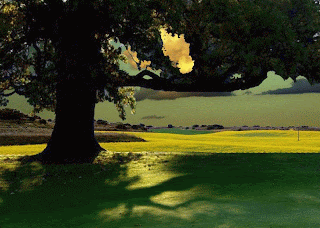Exploring the Martial Arts Mastery of the Samurai: Traditions, Techniques, and Legacy
Introduction: The Martial Heritage of the Samurai
The samurai, Japan’s legendary warrior class, were renowned for their mastery of a wide spectrum of martial arts. Their training was not restricted to physical combat; it encompassed rigorous discipline, mental fortitude, spiritual development, and an unwavering code of honor known as Bushido. Understanding the martial arts utilized by samurai provides insight into their enduring influence on both traditional and modern combat disciplines. [1]
The Bugei JÅ«happan: 18 Classical Martial Arts of the Samurai
Central to samurai training was the Bugei JÅ«happan , meaning “18 Martial Arts.” This comprehensive system evolved across centuries to meet the changing needs of samurai in feudal Japan. It encompassed a diversity of disciplines, each designed to prepare warriors for the realities of battle, self-defense, and leadership. [1]
Some of the key martial arts within this system included:
- Kenjutsu – The art of swordsmanship, focusing on both offensive and defensive techniques with the katana. [5]
- Kyujutsu – The discipline of archery, considered one of the most vital skills for early samurai, especially for mounted combat. [3]
- Jujutsu – Unarmed combat techniques, enabling the samurai to defend themselves without weapons through grappling and throws. [5]
- Sojutsu – The art of spear fighting, which gained prominence following encounters with Mongol invaders. [2]
- Naginatajutsu – Techniques using the naginata, a pole weapon effective in both infantry and cavalry roles. [2]
- IaidÅ – The discipline of drawing and cutting with the sword, emphasizing speed and precision. [3]
- Kendo – The modern evolution of sword fighting, rooted in ancient kenjutsu techniques. [3]
Historical Evolution and Practical Applications
Samurai martial arts did not remain static; they evolved alongside the changing nature of warfare. In the early periods, mounted archery (kyujutsu) was paramount, but as the battlefield shifted to infantry confrontations, swordsmanship and spear fighting gained prominence. [2]
For example, the Mongol invasions prompted samurai to adapt by utilizing spears and naginata more frequently, reflecting the need for versatile weapon skills. Over time, the samurai’s martial repertoire expanded to include ground fighting, wrestling, and even techniques for restraining or tying opponents, signifying their holistic approach to combat. [3]
Unarmed Combat: Jujutsu and Its Legacy
Jujutsu was essential for samurai who might be disarmed in battle. This art emphasized throws, locks, and grappling techniques, making it possible to subdue opponents without weapons. The legacy of jujutsu is visible in modern martial arts such as Judo and Brazilian Jiu Jitsu, both of which evolved from these traditional forms. [5]
To access authentic jujutsu training, search for accredited martial arts schools that specialize in Japanese traditional arts. Many organizations provide directories of certified instructors-consider searching for “traditional jujutsu schools near me” or consult national martial arts federations for recommendations.
Weapon-Based Arts: Kenjutsu, Kyujutsu, Sojutsu, and Naginatajutsu
Kenjutsu , the art of swordsmanship, was the defining skill of the samurai. Training involved kata (pre-arranged forms), sparring, and live blade practice, all aimed at developing both technical prowess and mental focus. Kenjutsu continues to be taught in koryu (old-school) martial arts dojos; search for “kenjutsu dojo” or inquire with Japanese cultural centers for local classes. [5]

Source: 7starma.com
Kyujutsu (archery) and Sojutsu (spear fighting) were also integral. Modern practitioners can find kyudo (the contemporary form of Japanese archery) clubs through national archery associations. For sojutsu and naginatajutsu, seek out koryu bujutsu schools or ask for recommendations from established martial arts organizations. [2]
Spiritual and Mental Discipline: The Role of Bushido
Samurai martial arts extended beyond physical techniques-they were inseparable from Bushido , the “Way of the Warrior.” Bushido codified virtues like loyalty, honor, and self-discipline, shaping the ethical and mental dimensions of samurai life. [4]

Source: allstarbjj.com
Modern martial artists can study Bushido through reputable martial arts literature, seminars, and cultural programs. Consider contacting Japanese cultural societies or searching for “Bushido seminars” to immerse yourself in this philosophy.
Accessing Samurai Martial Arts Today: Step-by-Step Guidance
If you’re interested in studying the martial arts practiced by samurai, follow these steps for actionable results:
- Determine which art (Kenjutsu, Jujutsu, Kyudo, etc.) interests you most.
- Search for local dojos or martial arts schools specializing in Japanese traditional arts. Use search terms such as “Kenjutsu school,” “Kyudo club,” or “Jujutsu dojo.”
- Contact national martial arts organizations like the United States Kendo Federation or the All Japan Jujutsu Federation for directories of certified instructors.
- Attend introductory classes or seminars to experience the training firsthand.
- Participate in cultural events or workshops hosted by Japanese cultural centers for deeper immersion into the samurai ethos.
- Study reputable books and documentaries on samurai history and martial arts-these resources can guide your journey and deepen your understanding.
For those seeking guidance without specific links, consider reaching out to your nearest Japanese cultural center, university martial arts department, or national martial arts federation for up-to-date information on accredited schools and instructors.
Challenges and Solutions in Samurai Martial Arts Training
Adopting samurai martial arts presents challenges, such as finding authentic instruction and understanding historical context. Modern dojos may vary in their adherence to tradition, so it’s essential to verify credentials and lineage. If local options are limited, online seminars, instructional videos, and international workshops offer alternatives. Always review instructor qualifications and seek recommendations from recognized martial arts organizations before enrolling.
Alternative Approaches and Modern Adaptations
While some arts like Kenjutsu and Jujutsu remain closely linked to their original forms, others have evolved into modern practices-Kendo and Judo, for instance, are widely accessible and offer a taste of samurai discipline. Mixed Martial Arts (MMA) and Karate, though not directly derived from samurai training, embody some principles and techniques that trace their roots to the samurai ethos. [4]
Research local martial arts clubs, compare curricula, and consult with instructors to find the best fit for your goals and interests.
Key Takeaways: The Enduring Legacy of Samurai Martial Arts
The martial arts practiced by samurai encompassed a broad spectrum of techniques, philosophies, and disciplines. Their commitment to mastery, self-discipline, and ethical conduct remains a source of inspiration for martial artists worldwide. Whether you seek physical training, mental fortitude, or a deeper understanding of Japanese culture, exploring samurai martial arts offers a pathway to personal growth and historical appreciation.
References
- [1] Black Belt Magazine (2024). What is Bugei JÅ«happan? The 18 Classical Martial Arts of the Samurai.
- [2] Don Racine Karate. Samurai – The History of Karate.
- [3] National Karate Kobudo Federation (2021). Martial Arts of The Samurai.
- [4] Eclipse Martial Arts Supplies (2024). Unveiling the Legacy of Samurai Culture and Its Influence on Martial Arts.
- [5] Gracie Martial Arts Tampa (2023). What Martial Arts Did The Samurai Use?



